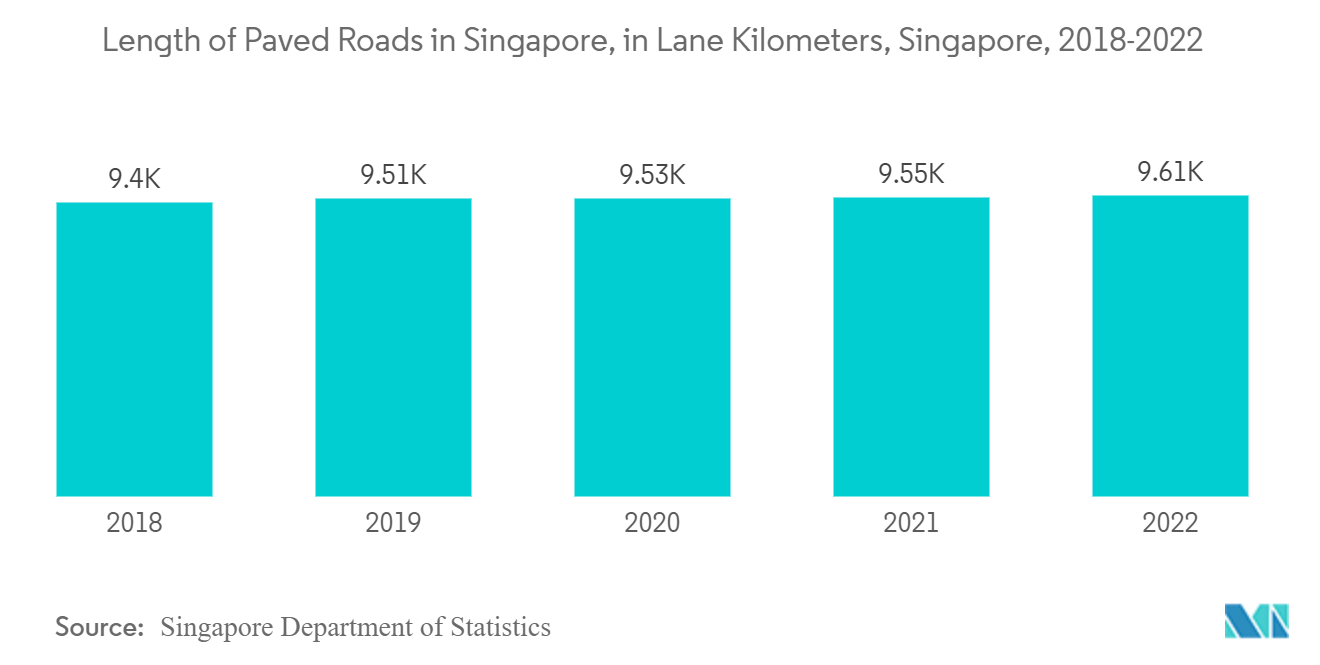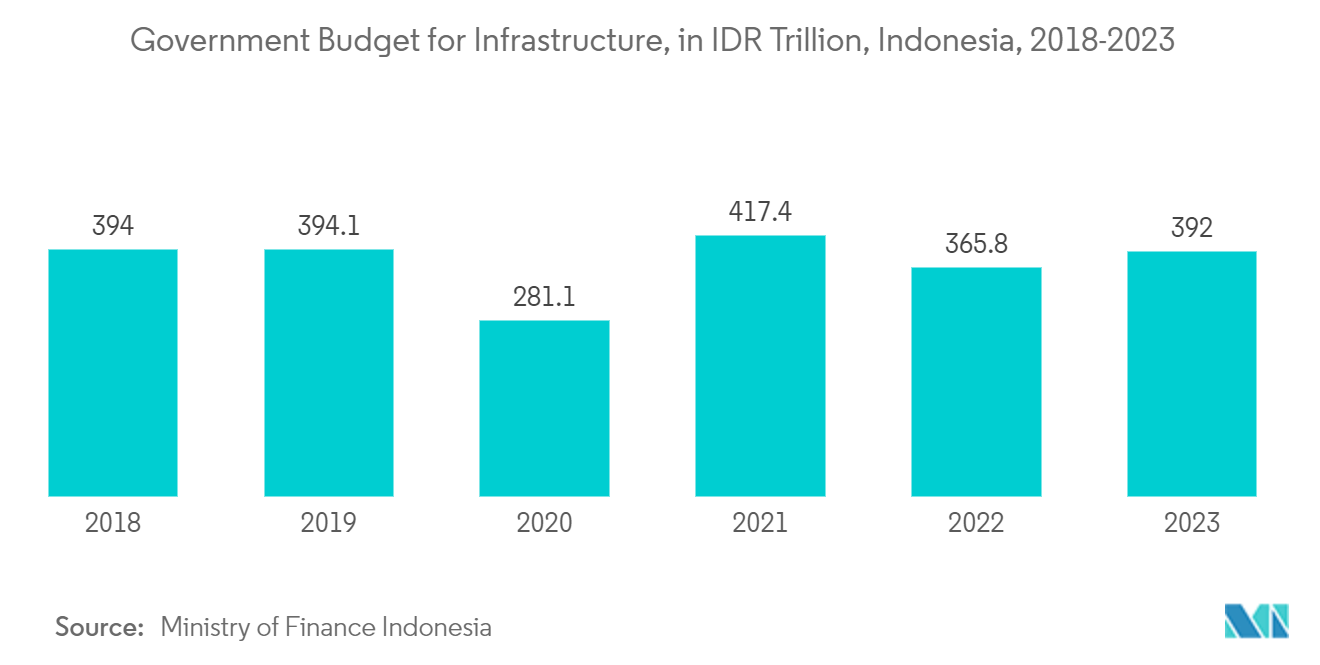Market Trends of South East Asia Geosynthetics Industry
Construction Segment to Dominate the Market
- In the construction segment, geosynthetics are highly used for the construction of roadways, railways, bridges, and other types of construction to stabilize the terrain.
- Geosynthetics are versatile materials that enhance the performance of roadways. They can be used for separation, filtration, reinforcement, stiffening, drainage, barrier, and protection.
- The first application of geosynthetics technology was to stabilize a highway built on swampy land leading to Soekarno Hatta airport in Indonesia. Geosynthetics are now widely used in civil engineering for challenging ground conditions, including road construction.
- The demand for geosynthetic materials is likely to increase, with several projects in the pipeline across the region. For instance, the Yogyakarta-Bawen Toll Road Project involves the construction of a 76.36 km toll road from Bawen to Yogyakarta in Indonesia, which commenced in Q2 2022 and is expected to finish in Q4 2024.
- According to the Singapore Department of Statistics, approximately 9.61 thousand lane-kilometers of roads were paved in 2022. A new road interchange to connect the Pan-Island Expressway (PIE) and the upcoming Tengah Town (by 2027) is also under construction in the country and is scheduled for completion in 2023.
- An eight-lane bridge is being built parallel to Rama IX Bridge over the Chao Phraya in Bangkok, Thailand, and is the country's widest river bridge. It will be a 2-kilometre-long cable-stayed structure, part of the Rama III-Dao Khanong-Western Ring Road expressway project, which is expected to be completed by 2024.
- In Malaysia, the construction of the nation’s longest bridge, the Batang Lupar bridge, spanning over a river, is under construction and is scheduled for completion by 2025.
- In the Philippines, the Department of Transportation awarded ACCIONA with the South Commuter Railway Project Package 02 in February 2023, which involves the construction of 7.9 kilometers of rail tracks on a viaduct, as well as three stations (España, Santa Mesa, and Paco) in Manila.
- Therefore, such construction projects in pipelines in Southeast Asia countries are playing an instrumental role in driving the demand for the geosynthetics market.

Indonesia to Dominate the Regional Market
- Indonesia is expected to dominate the geosynthetics market during the forecast period due to the increasing construction projects such as roadways, railways, bridges, drainage, soil erosion control, and others.
- In Indonesia, a road development project through a biodiverse forest to build its ‘green’ capital city was under construction as of April 2023. A new toll road in Indonesia’s East Kalimantan province is being built to improve access to the interior of Borneo, including to the nation’s new capital city, Nusantara.
- Additionally, in Indonesia, soil erosion is a major threat to sustainability and productivity in agriculture, with knock-on effects on the climate crisis and food security.
- Reducing erosion risk is particularly important for Indonesia, where three of the world’s 10 watersheds have the highest erosion risk. Sustainable land management can help solve a multitude of problems. Therefore, any initiative in this regard may serve as an opportunity for the geosynthetics market in the country.
- Geosynthetics is a revolutionary product group in civil engineering. They offer cost-effective, high-performance, and long-term solutions to problems in geotechnical, geo-environmental, hydraulic, and transportation engineering. Ultimately, they lead to more sustainable, economically constructed infrastructure with greater resilience compared to alternatives.
- Various infrastructure investments are being witnessed in the planning and construction stages in Indonesia, which is likely to have a positive influence on the demand for geosynthetics. For instance, the Indonesian President broke ground for the construction of several projects ranging from a toll road, airport, and hospital to a hotel in a planned new capital city, Nusantara, worth USD 32 billion.
- According to the Ministry of Finance Indonesia, the government of Indonesia has allocated around IDR 392 trillion (~USD 0.03 trillion) for infrastructure construction as of 2023.
- Therefore, all such aforementioned trends in the country are anticipated to increase the demand for geosynthetics during the forecast period.


